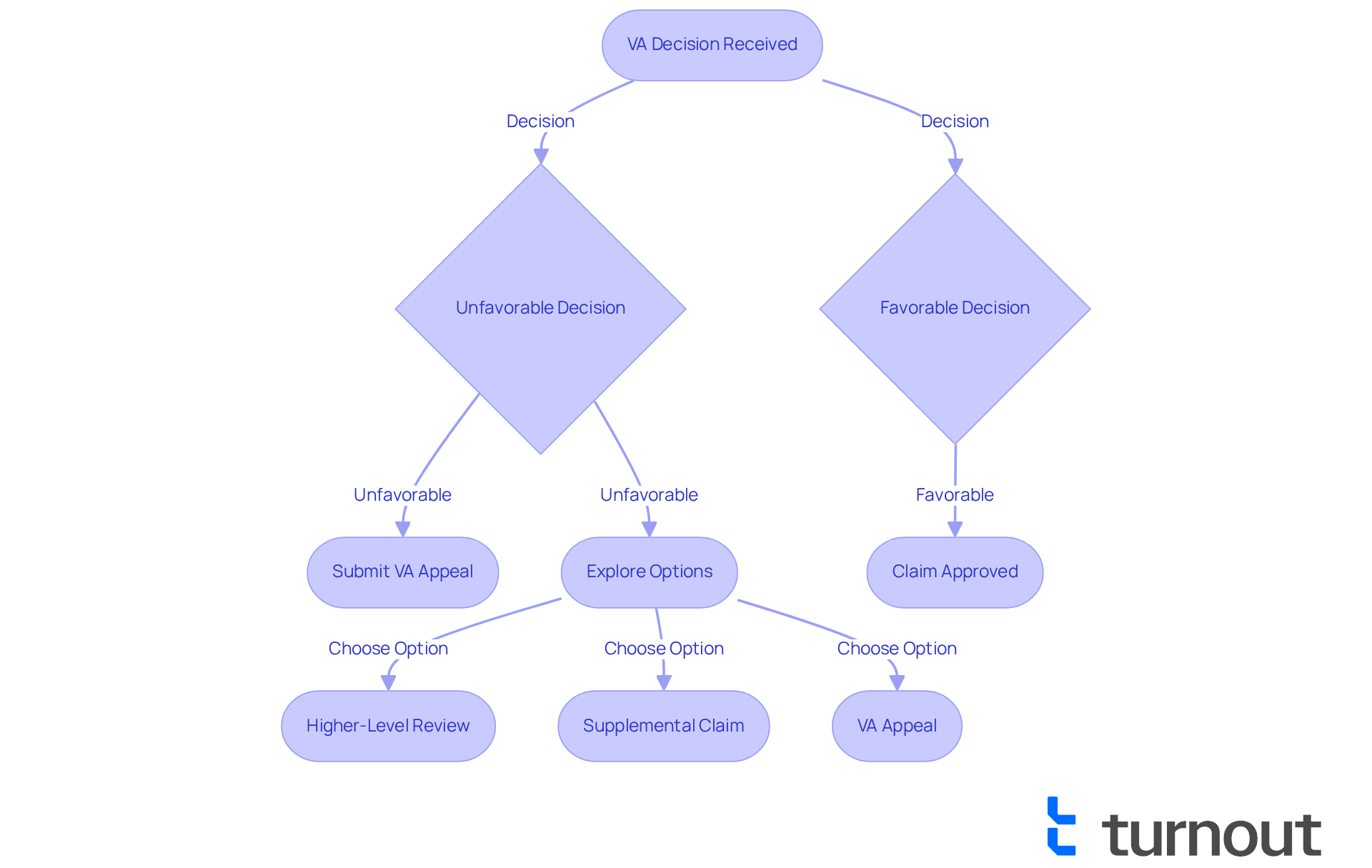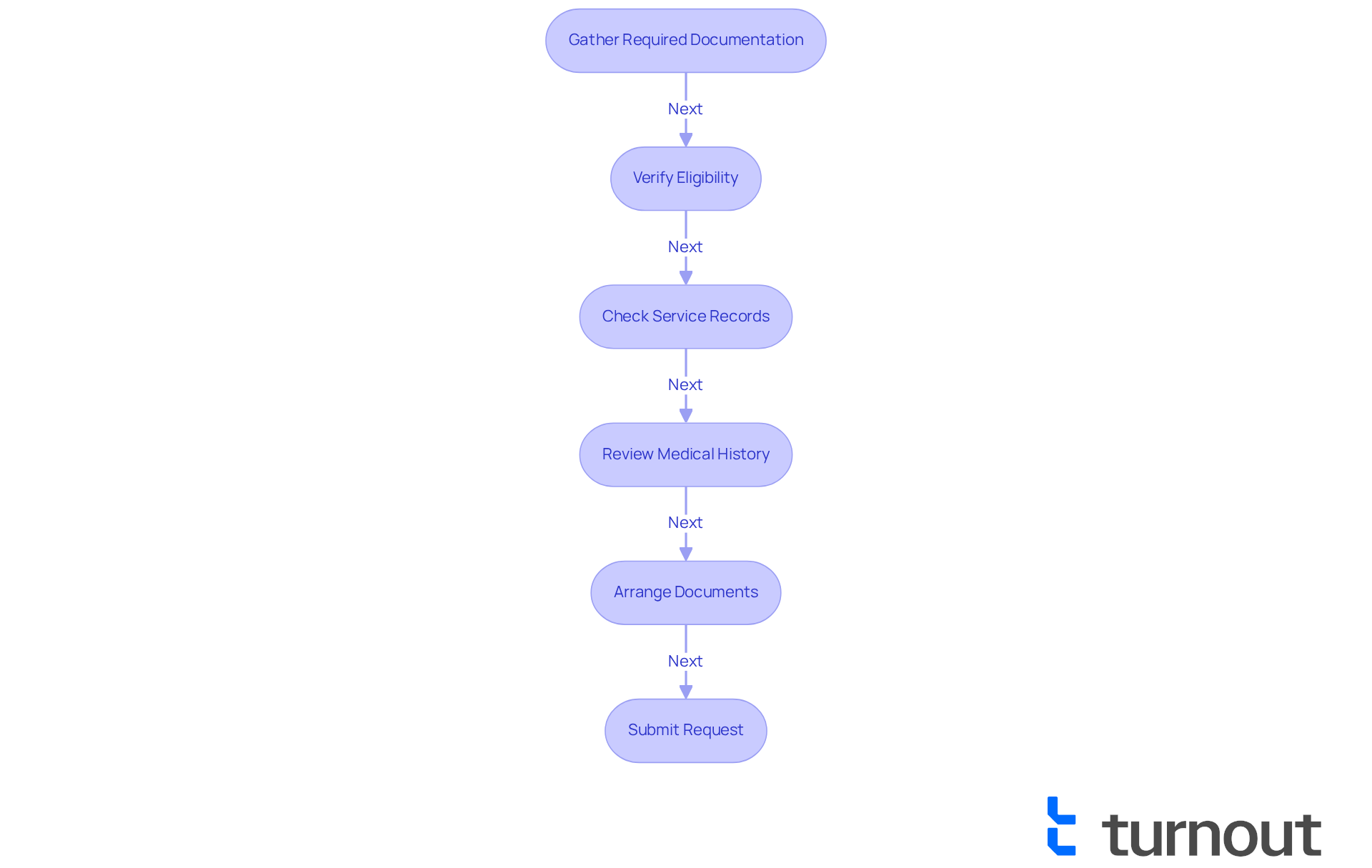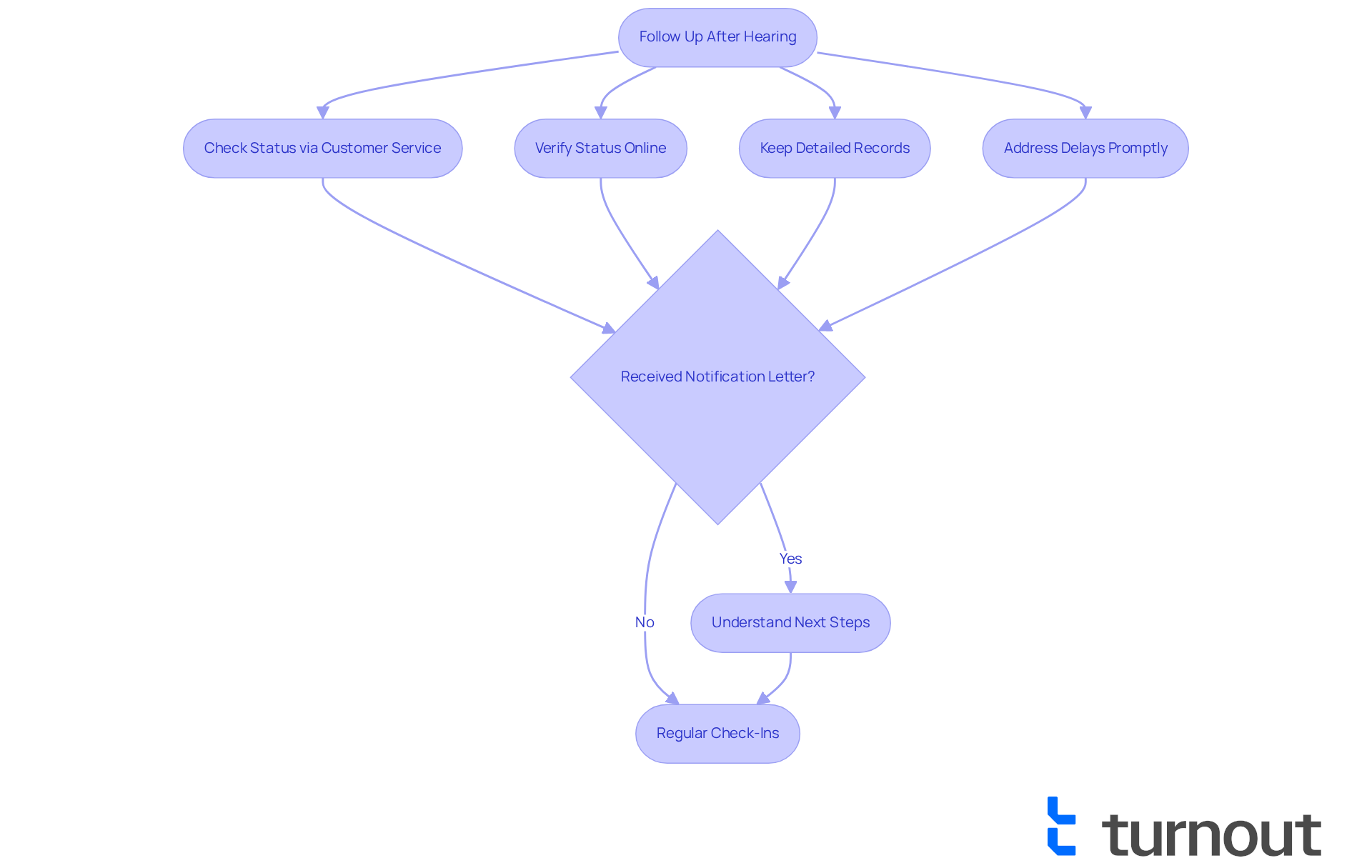Overview
Navigating the VA appeal process can be daunting, and we understand the challenges you may face. This article offers comprehensive guidance to help you master the necessary steps and documentation required to contest unfavorable decisions regarding your benefits claims. You'll find detailed explanations of various appeal options and timelines, emphasizing the importance of thorough preparation and follow-up.
It's common to feel overwhelmed, but informed and organized actions can significantly enhance your chances of a favorable outcome. Remember, you are not alone in this journey. We're here to help you every step of the way. Take heart in knowing that with the right support and resources, you can effectively advocate for your benefits.
Introduction
Navigating the complexities of the VA appeal process can feel overwhelming for many veterans. It's common to face the anxiety of an unfavorable decision on benefits claims. Understanding these intricacies is essential, as this journey can often take months or even years, leaving many feeling frustrated and isolated.
We’re here to help. This article serves as a comprehensive guide to mastering the VA appeal process, providing step-by-step strategies and insights that empower veterans to advocate effectively for their rights.
How can veterans ensure they are well-prepared and informed throughout this challenging process? By taking proactive steps, they can increase their chances of a favorable outcome. Remember, you are not alone in this journey; support is available to guide you every step of the way.
Understand the VA Appeal Process
Navigating the system can feel intricate and overwhelming. We understand that this process involves several stages that require careful attention. It typically begins when an experienced individual receives a decision from the VA regarding their benefits claim. If the outcome is unfavorable, know that you have the right to submit a [VA appeal](https://myturnout.com/service) to contest it. It's important to recognize that the can vary significantly, often taking several months to years based on the complexity of your case and the existing backlog at the VA. On average, it takes about 155 calendar days to reach a decision on a VA disability claim, helping to set realistic expectations for veterans.
As you embark on this journey, familiarize yourself with the different , such as:
- Supplemental Claim
- VA appeal
Each option has its own processes and criteria, which can impact the overall timeline and likelihood of success. Did you know that approximately 80% of former military personnel may be undervalued by the VA? This highlights the importance of seeking a VA appeal if the initial outcome does not accurately reflect your degree of disability. Remember, you have one year from the date of the VA's ruling to submit a challenge, so prompt action is crucial.
Recent changes to the VA appeal process have introduced more streamlined options for service members, allowing for a more efficient examination of claims. You can expect your requests to progress through several phases:
- Evidence collection
- Preparation for notification
- Notification of the outcome
Typically, the decision packet takes 10-14 days to reach its destination after a choice is made, providing you with essential details about your claims.
Many former service members have shared their experiences with the review system, expressing feelings of frustration and isolation. However, there are also success stories that demonstrate how persistence can lead to favorable outcomes. By utilizing available resources and understanding your options for recourse, such as the VA appeal through requesting an informal conference during the Higher-Level Review, you can enhance your chances of obtaining the benefits you deserve. Consulting accredited representatives for assistance can also offer valuable guidance throughout this process. Remember, you are not alone in this journey, and we're here to help.

Gather Required Documentation and Verify Eligibility
Before you begin your request, it's important to gather all the necessary documentation. This includes your original claim, the , medical records, and any additional evidence that supports your case. We understand that this process can feel overwhelming, but verifying your eligibility by reviewing the criteria set by the VA for the specific benefits you are seeking to va appeal is crucial. This may involve checking your service records, medical history, and any previous claims. in a clear and accessible way will simplify the request process and ensure you have everything you need when submitting your request.
Statistics show that approximately 39.49% of veterans encounter . This highlights the importance of . Successful strategies include:
- Obtaining buddy statements to
- Ensuring that all medical evidence is current and relevant
As one VA representative noted, "Offering thorough and precise documentation can greatly enhance your likelihood of a favorable outcome." By following these steps, you can of a positive result in your va appeal request. Remember, we’re here to help you through this journey.

Initiate Your VA Appeal
Starting your can feel overwhelming, but we're here to help. It’s essential to complete the . If you’re seeking a , be sure to fill out VA Form 20-0996. For a Supplemental Claim, use VA Form 20-0995. Remember, when completing these forms; even small mistakes can lead to delays or complications.
Many veterans have shared their experiences of waiting for —some for over six years. Once you’ve completed your forms, you can submit them to the VA through their website, by mail, or in person at your local VA office. Always keep copies of all submitted documents for your records. After submission, you will receive a confirmation from the VA, which is crucial for tracking the progress of your case.
can significantly improve your chances of a favorable VA appeal outcome. of following these steps carefully, and you are not alone in this journey. We understand that it may feel daunting, but taking these steps can lead to the .
. Start from the top, complete your forms based on your needs, then submit them, and finally await confirmation. Each branch shows the specific actions you need to take!](https://images.tely.ai/telyai/allionyj-follow-the-arrows-to-see-each-step-in-the-va-appeal-process-start-from-the-top-complete-your-forms-based-on-your-needs-then-submit-them-and-finally-await-confirmation-each-branch-shows-the-specific-actions-you-need-to-take.webp)
Prepare for Your Appeal Hearing
can feel overwhelming, but you are not alone in this journey. Start by carefully reviewing all documentation and evidence you plan to present. This includes related to in-service events, injuries, or illnesses. Organizing your arguments and can make a significant difference.
Practicing your presentation is essential. It can greatly enhance your clarity and confidence as you share your story. Additionally, consider . Lay statements from family, friends, or fellow service members can provide valuable insights into your condition, strengthening your case.
We understand that the may be unfamiliar. Familiarizing yourself with it and anticipating the types of questions you may encounter can help ease your nerves. Working with a can simplify the process and improve your chances of success.
Data shows that veterans who prepare adequately for their hearings have a . This underscores the importance of being well-prepared. Arriving with a will empower you to present effectively and respond to inquiries from VA officials. Remember, we’re here to help you every step of the way.

Follow Up After Your Hearing
After your hearing, we understand how important it is to stay informed about the with the . You can easily through their customer service line or by verifying your status online. Keeping a detailed record of all communications, including dates and the names of representatives you speak with, is essential. If you encounter any delays or issues, addressing them promptly can help prevent further complications.
Be prepared for the possibility of receiving a notification letter that outlines the result of your appeal. Understanding the next steps based on this resolution is crucial for your ongoing . It's common to feel overwhelmed, especially considering that historically, about 11-12 percent of all claims are appealed, with only 4-5 percent reaching the Board of Veterans' Appeals. This highlights the importance of .
Many veterans have expressed frustration over , with some waiting at least five years for a decision—a situation that the VA acknowledges as unacceptable. Therefore, include:
- Regular check-ins
- Utilizing tools such as calendars or reminder apps to track your communications and deadlines
Remember, you are not alone in this journey; we’re here to help you .

Conclusion
Navigating the VA appeal process can feel overwhelming, but understanding its intricacies is vital for veterans seeking the benefits they deserve. This guide has shed light on the various stages of the appeal process, emphasizing that timely action, thorough documentation, and strategic preparation are essential for success.
We want to highlight the importance of knowing your options—whether it's a Higher-Level Review or a Supplemental Claim. Gathering comprehensive documentation to support your case is crucial. Additionally, preparing for your appeal hearing and actively following up afterward can significantly influence the outcome of your appeal. By being proactive and organized, you can enhance your chances of a favorable decision.
Ultimately, the VA appeal process is not merely a bureaucratic hurdle; it is a vital avenue for ensuring that you receive the recognition and benefits you have earned. It’s important to take charge of your appeals, utilize available resources, and seek assistance when needed. By doing so, you can navigate this complex system with confidence and resilience, advocating effectively for your rights and well-being. Remember, you are not alone in this journey; we’re here to help.
Frequently Asked Questions
What is the VA appeal process?
The VA appeal process begins when an individual receives an unfavorable decision from the VA regarding their benefits claim. They have the right to contest this decision through a VA appeal, which can take several months to years depending on the complexity of the case and the VA's backlog.
How long does it typically take to reach a decision on a VA disability claim?
On average, it takes about 155 calendar days to reach a decision on a VA disability claim.
What are the different types of requests available in the VA appeal process?
The main types of requests are Higher-Level Review, Supplemental Claim, and VA appeal. Each option has its own processes and criteria that can affect the timeline and likelihood of success.
How long do I have to submit a VA appeal after a ruling?
You have one year from the date of the VA's ruling to submit a challenge.
What are the phases of the VA appeal process?
The phases include initial claim assessment, evidence collection, preparation for notification, and notification of the outcome.
How long does it take to receive the decision packet after a choice is made?
The decision packet typically takes 10-14 days to reach its destination after a choice is made.
What common challenges do veterans face during the VA appeal process?
Approximately 39.49% of veterans encounter eligibility challenges during the review process, often due to insufficient documentation.
What documentation is necessary for a VA appeal?
Necessary documentation includes the original claim, the VA's decision letter, medical records, and any additional evidence that supports the case.
How can I verify my eligibility for a VA appeal?
You can verify your eligibility by reviewing the criteria set by the VA for the specific benefits you are seeking, which may involve checking service records, medical history, and previous claims.
What strategies can improve my chances of a favorable outcome in a VA appeal?
Strategies include obtaining buddy statements to support claims and ensuring all medical evidence is current and relevant. Thorough and precise documentation can greatly enhance the likelihood of a favorable outcome.




